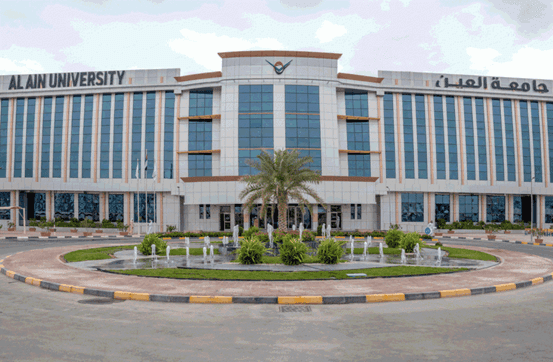Workshop Title:
Enhancing Human-Machine Interaction through Multimodal Interfaces: A User-Centric Approach
Date:
January 21st, 2024 (GMT+4)
Organizer:
Al Ain University
Keywords:
- Human-machine interaction
- Multimodal interfaces
- User-centric approach
- Human-computer interaction
- Artificial intelligence
- Cognitive science
- User-centered design
- Empirical evaluation
- Interaction modalities
- User experience
- Usability assessment
Workshop Chair:
Personal Bio:
Dr. Yazeed Ghadi, Senior Member, IEEE, is a distinguished researcher and academic in the
field of computer engineering and computer science. He earned his Ph.D. degree from
Queensland University, where his groundbreaking research on developing hybrid
plasmonic-photonic on-chip biochemical sensors earned him the prestigious Sigma Xi Best
Ph.D. Thesis Award.
Currently serving as an Associate Professor of Computer Science at Al Ain University, Dr.
Yazeed brings a wealth of expertise and experience to his role. Prior to joining Al Ain
University, he worked as a Postdoctoral Researcher at The University of Queensland, further
expanding his knowledge and contributing to cutting-edge research in his field.
Dr. Yazedd has an impressive publication record, with over 100+ peer-reviewed journals and
conference papers to his credit. His research contributions extend beyond publications, as
he holds three pending patents, showcasing his innovative thinking and commitment to
advancing technology.
With a focus on developing novel electro-acoustic-optic neural interfaces for large-scale
high-resolution electrophysiology and distributed optogenetic stimulation, Dr. Yazeed's
current research interests align with the forefront of scientific exploration. His
groundbreaking work has earned him recognition through various awards, underscoring his
exceptional contributions to the field of electrical and computer engineering.
In summary, Dr. Yazeed is an esteemed professional who has made significant contributions to
academia and research. His dedication, expertise, and commitment to advancing knowledge make
him a valuable asset in the field of electrical and computer engineering.
Workshop Description:
Background:
Human-machine interaction (HMI) refers to the study and design of interfaces that enable communication and interaction between humans and machines. Over the years, advancements in technology have transformed the way humans interact with machines, from traditional keyboards and mouse inputs to touchscreens, voice recognition, gesture control, and augmented reality. The field of HMI encompasses various disciplines, including human-computer interaction (HCI), cognitive science, psychology, and engineering, with the goal of creating intuitive, efficient, and user-friendly interfaces. One significant development in HMI is the emergence of multimodal interfaces. These interfaces integrate multiple interaction modalities, such as speech, touch, vision, and gestures, allowing users to interact with machines using various input methods simultaneously. By leveraging multimodal input and output channels, these interfaces aim to provide more natural and immersive interaction experiences.
The rise of artificial intelligence (AI) and machine learning has also had a profound impact on HMI. AI-powered systems enable machines to understand and interpret human inputs, such as natural language, facial expressions, and gestures. This enables more intelligent and context-aware interactions, allowing machines to adapt and respond to user needs effectively.
Efficient and effective human-machine interaction is crucial across various domains and applications. In industries such as healthcare, robotics, automotive, and entertainment, interfaces that facilitate seamless and intuitive interaction are essential for improving productivity, user satisfaction, and safety.
User-centric design approaches have become central to HMI research and development. Understanding human cognitive processes, preferences, and limitations is crucial for designing interfaces that cater to user needs and capabilities. By focusing on the user's perspective, researchers and designers can create interfaces that are intuitive, easy to learn, and minimize cognitive load.
Overall, the field of HMI is dynamic and continually evolving as technology advances and user expectations change. Research and development efforts in enhancing human-machine interaction through multimodal interfaces have the potential to revolutionize how humans interact with machines, leading to more seamless and productive collaborations between humans and intelligent systems.
Goal/Rationale:
1- Foster knowledge exchange: The workshop aimed to provide a platform for participants to
share their research findings, experiences, challenges, and insights related to enhancing
human-machine interaction through multimodal interfaces. It encouraged the exchange of
ideas, enabling participants to learn from each other's work and expertise.
2- Discuss current state-of-the-art: The workshop aimed to review and discuss the current
state-of-the-art in multimodal interfaces for human-machine interaction. Participants
analyzed existing technologies, frameworks, and methodologies, identifying strengths,
limitations, and application domains. This discussion served as a foundation for identifying
gaps and opportunities for further advancements.
3- Explore user-centric approaches: The workshop focused on adopting a user-centric approach
to design multimodal interfaces. Participants examined human cognitive processes,
preferences, and limitations in interacting with machines. By understanding user needs and
capabilities, the workshop aimed to explore how interfaces can be optimized to enhance user
experience, increase productivity, and reduce cognitive load.
4- Evaluate multimodal interaction techniques: The workshop facilitated empirical evaluation
of different multimodal interaction techniques and interfaces. Participants conducted user
studies and experiments to assess the effectiveness and usability of various approaches.
They measured quantitative metrics such as task completion time and error rates, as well as
qualitative assessments including user satisfaction and perceived ease of use.
Overall, the workshop aimed to advance the field of human-machine interaction through multimodal interfaces by fostering collaboration, knowledge exchange, and innovation. By focusing on user-centric approaches and empirical evaluations, the workshop aimed to contribute to the development of intuitive, efficient, and user-friendly interfaces that enhance the interaction between humans and machines.
Scope and Information for Participants::
The workshop on "Enhancing Human-Machine Interaction through Multimodal Interfaces: A User-Centric Approach" focused on a specific area within the broader field of human-machine interaction. Participants were expected to have a background and interest in human-computer interaction, multimodal interfaces, artificial intelligence, cognitive science, or related disciplines.
Information for participants:
Background knowledge: Participants were expected to have a basic understanding of
human-computer interaction concepts, multimodal interfaces, and relevant technologies such
as artificial intelligence and machine learning.
Research interests: Participants should have an interest in exploring and advancing the
field of human-machine interaction through multimodal interfaces. They were encouraged to
share their research findings, experiences, and challenges related to this area.
Interactive discussions: The workshop involved interactive discussions, where participants
were encouraged to actively participate, ask questions, and share their insights and
perspectives.
Collaborative activities: Participants were expected to engage in collaborative activities,
such as designing and prototyping multimodal interfaces. These activities promoted knowledge
sharing and collaboration among participants.
Case studies and examples: The workshop included case studies and examples from real-world
applications of multimodal interfaces, providing practical insights and illustrating the
potential impact of these interfaces.
Future directions: The workshop aimed to identify future research directions and
opportunities in enhancing human-machine interaction through multimodal interfaces.
Participants were encouraged to discuss potential research topics, challenges, and emerging
trends in the field.
Overall, participants in the workshop gained knowledge, practical skills, and insights into designing and evaluating multimodal interfaces. They had the opportunity to engage with experts, exchange ideas, and contribute to advancing the field of human-machine interaction through user-centric approaches and multimodal interfaces.
Venue:
Al Jimi, Near Al Ain Municipality, Al Ain - Abu Dhabi, UAE

VISA:
Visa and Emirates ID - The Official Portal of the UAE Government
In order to ensure the information is correct and up to date, there may be changes which we are not aware of. And different countries have different rules for the visa application. It is always a good idea to check the latest regulations in your country. This page just gives some general information of the visa application.
Do you need an entry permit/visa to enter the UAE?
GCC citizens do not need a visa to enter the UAE. Some of the other nationalities can obtain a visa on arrival while others need to apply for a visa in advance. Find out if you need a visa to enter the UAE.
Visa-free entry
Citizens of GCC countries do not require a visa or permit or to be sponsored by a national or resident in the UAE. They need to produce their GCC country passport or national ID card at the point of entry into the UAE.
Visa on arrival
30-day visa on arrival
Citizens of these countries (Dubai Visa Guide |
Dubai Tourist Visa Requirements | Visit
Dubai) do not require advance visa arrangements to enter the UAE and can obtain a
visa upon
arrival for 30 days with a 10-day grace period for extension.
90-day visa on arrival
Citizens of these countries (Dubai Visa Guide |
Dubai Tourist Visa Requirements | Visit
Dubai) do not require advance visa arrangements to enter the UAE and can obtain a
visa upon
arrival for 90 days:
Indian citizens
Indian citizens holding a normal passport and either
a visit visa issued by the USA or
a green card issued by the USA or
a residence visa issued by the UK or
a residence visa issued by the EU
can obtain a visa on arrival for a maximum stay of 14 days provided that the visas or the
green card is valid for at least six months from the date of arrival into the UAE.
Read about the UAE visa requirements for non-US citizens.
Note: Passports must be valid for at least 6 months from the date of entry into the UAE.
Lists of countries eligible for visa on arrival may vary from time to time; therefore,
please check with the UAE embassy in your country before travelling to the UAE.
Related links
Visa on arrival- General Directorate of Residency and Foreigners Affairs Dubai
For more information, please contact:
The UAE Federal Authority for Identity and Citizenship, Customs and Port Security
Attend in person:
If you want to attend the workshop on-site, please email the Conference Committee: info@confmss.org.
